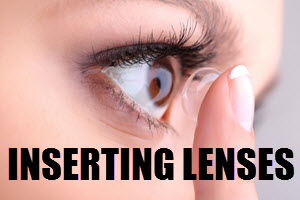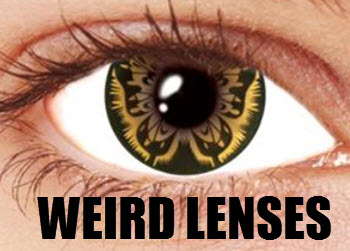The Role of Decorative Lenses in Movie Productions
The incorporation of decorative lenses in movie productions has become a common practice in the film industry. These lenses, often referred to as cosmetic or theatrical lenses, play a crucial role in enhancing a character’s visual appeal and contributing to the narrative. By altering or emphasizing the color of an actor’s eyes, these lenses can drastically change their appearance, thereby supporting the storytelling process and aiding in character development. This element of film production has evolved significantly over the years, embracing advanced technology and expanding the possibilities for filmmakers and actors alike.
Enhancing Character Authenticity
One of the primary functions of decorative lenses is to enhance the authenticity of a character. They are frequently used to provide actors with eye colors that align with their character’s background or fantasy world. For instance, in fantasy and science fiction genres, characters may be portrayed with unnatural or unsaturated eye colors to denote their otherworldly origins. Such eye colors can create an immediate visual impact, setting the character apart as something extraordinary within the narrative context. Similarly, historical dramas may utilize lenses to match historical records or artistic interpretations of historical figures. This practice helps in achieving a heightened sense of realism, acknowledging the meticulous attention to detail that is often required in the depiction of historical narratives.
Technical Advancements in Decorative Lenses
The technical advancements in lens-making have been significant in recent years. These advancements have enabled filmmakers to create more realistic and comfortable lenses, revolutionizing their use in the industry. Modern decorative lenses are not only available in a wide array of colors and patterns but also come with significant improvements in terms of comfort and wearability. Materials used in manufacturing these lenses have been optimized to ensure they are breathable, allowing adequate oxygen to reach the eyes, which is crucial for eye health. This allows actors to wear them for extended periods without discomfort, which is essential for maintaining performance quality throughout long shooting schedules. Furthermore, contemporary lenses are designed to be easy to put on and take off, a feature that actors appreciate, especially during intensive filming sessions.
Popular Uses in Genre Films
Decorative lenses have become particularly popular in specific film genres, enhancing the narrative and aesthetic experience for audiences. In horror films, decorative lenses are often employed to elicit fear or create an unsettling effect. By altering the appearance of the eyes, filmmakers can transform a seemingly ordinary character into a horrifying creature. Vampires, zombies, and demons are commonly portrayed with lenses that make their eyes appear menacing or grotesque, enhancing the film’s visual impact. This use of lenses helps build suspense and atmosphere, integral components of horror storytelling. Additionally, in science fiction films, lenses can signify technological enhancements or alien traits, adding depth to the world-building efforts of filmmakers.
Health and Safety Considerations
While decorative lenses are invaluable for visual storytelling, they come with specific health and safety considerations. It is imperative that professional film productions adhere to strict health guidelines to prevent any potential risks associated with lens use. Productions ensure that lenses are sourced from reputable manufacturers and are fitted by qualified technicians. This is essential to prevent potential eye infections or complications. Moreover, actors are usually provided with guidance on proper lens care and hygiene to mitigate any risks associated with their use. Regular health checks and consultations with ophthalmologists are also common practices in the industry to monitor eye health throughout the production.
Impact on Actor Performance
The use of decorative lenses can significantly impact an actor’s performance. The change in appearance can help actors inhabit their roles more fully, aiding in the psychological shift required to portray a character convincingly. An actor’s ability to see themselves transformed physically can enhance their emotional engagement with their character, allowing for more nuanced portrayals. However, lenses may also present challenges, such as restricted vision or discomfort, which require actors to adapt their performance techniques accordingly. Actors might need to adjust their positions under lights to counteract glare or alter their eye movements to maintain believability while interacting with scenes and co-actors.
Conclusion
In conclusion, decorative lenses are a vital tool in movie productions, offering filmmakers the ability to enhance character authenticity and create visually compelling narratives. While they bring transformative benefits to a film’s aesthetic, it is essential that their use is paired with appropriate health and safety measures to protect the eyes of actors. Their strategic use in different genres can significantly enhance a film’s storytelling, whether by intensifying the authenticity of historical characters or by amplifying the fantastical elements in science fiction and horror films. The evolution of decorative lenses continues to contribute to the immersive experience of cinema, indicating their lasting value and potential in film production. For more insights into the use of specialized tools in film production, visit FilmInnovation.



 Cosmetic contact lenses
Cosmetic contact lenses